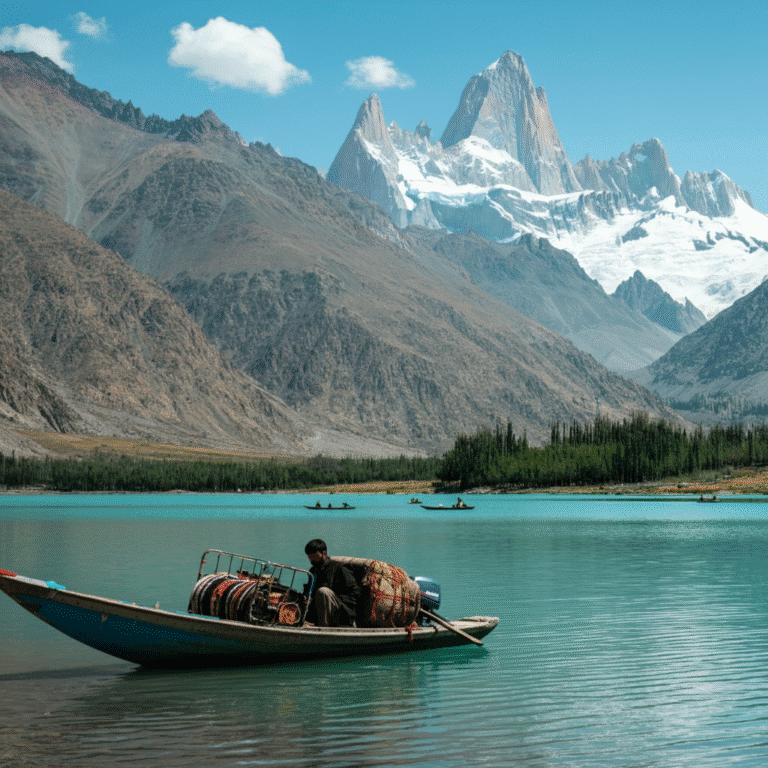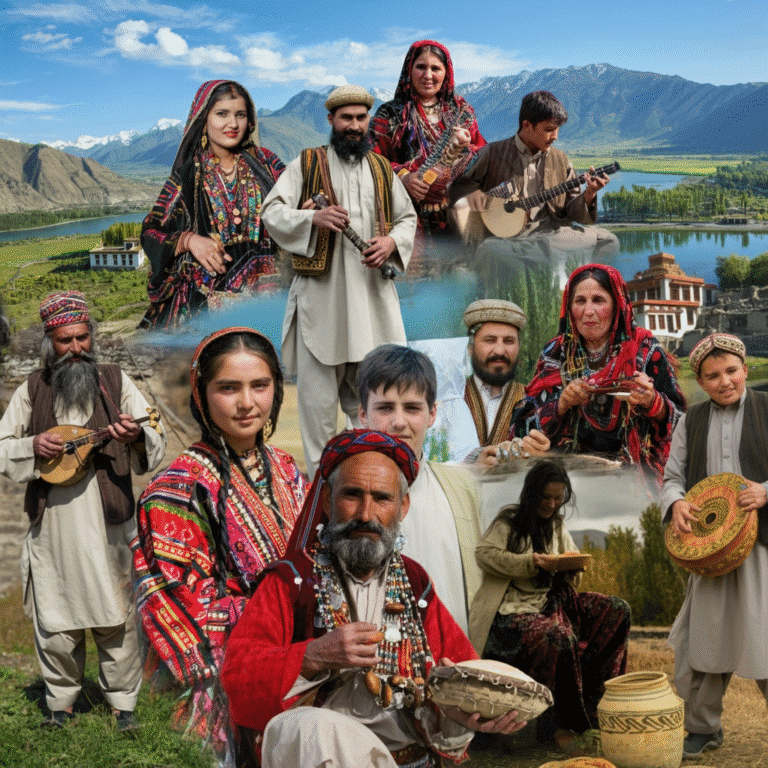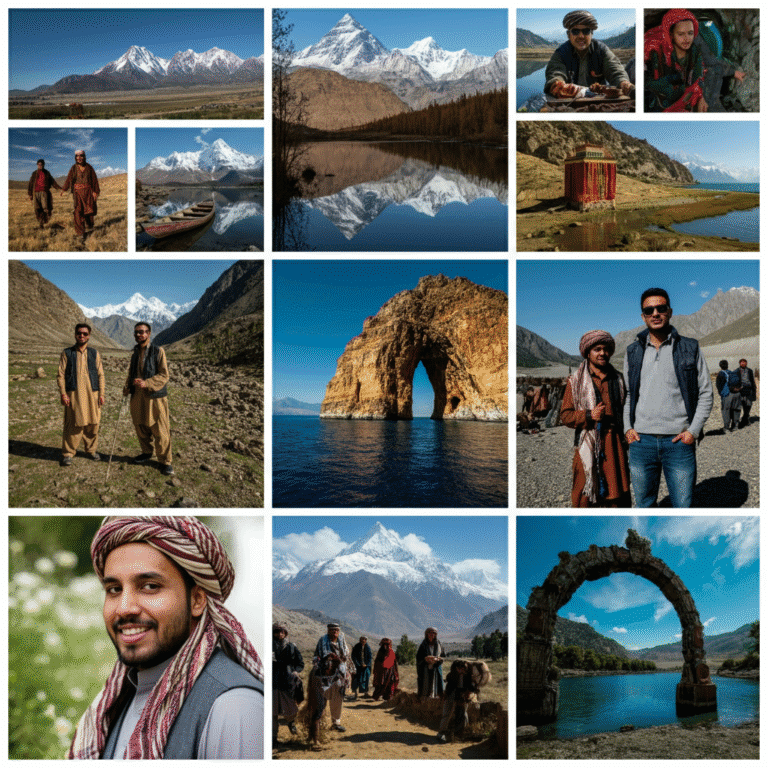
The Ultimate Guide to Exploring Gilgit Baltistan
Welcome to the untouched beauty of Gilgit Baltistan, often referred to as the crown jewel of Pakistan. With its towering peaks, crystal-clear lakes, and warm hospitality, Gilgit Baltistan offers unforgettable adventures for every kind of traveler, whether you’re an adrenaline junkie, culture seeker, or simply in need of a serene getaway.
Through this guide, you’ll discover insider tips, hidden gems, and everything you need to craft the perfect trip to one of the most stunning regions in the world.
Geography, Weather, and Map of Gilgit Baltistan
Nestled in the northernmost part of Pakistan, Gilgit Baltistan lies at the crossroads of some of the most famous mountain ranges in the world, including the Himalayas, Hindu Kush, and Karakoram. The area’s wild beauty encompasses lush valleys, roaring rivers, winding roads, and towering snow-capped peaks, such as K2 and Rakaposhi.
Weather and Best Time to Visit
The diverse climate means you can tailor your trip to suit your preferences. From spring blossoms in Hunza Valley to the stark beauty of the winter landscapes, GB transforms with every season. For most travelers, the ideal time to visit is April to October, when the weather is mild, the trails are open, and the valleys brim with life.
Navigation Made Simple
Here’s a map to familiarize yourself with the geography of Gilgit Baltistan, including key cities like Gilgit City, Skardu, and Chilas, as well as major attractions such as Attabad Lake, Deosai National Park, and Passu Cones.
Table of Contents
Discovering Culture, Food, Language, and Dress
When visiting Gilgit Baltistan, you’re not just experiencing breathtaking landscapes but also the vibrant local culture, a mosaic of languages, cuisine, and traditions.
Language and Tradition
The people of Gilgit Baltistan speak various languages, including Shina, Balti, Burushaski, and Wakhi, and can often switch seamlessly to Urdu or even English when interacting with visitors. Their warmth and hospitality are unmatched, with every encounter leaving you with a smile and perhaps an invitation for chai.
Culinary Adventures
Food is a highlight of any trip to GB. Don’t miss dishes like balay, a noodle-based soup, or chapshuro, a delicious meat-filled bread. And for dessert? Fresh apricot jam and walnut cake are must-tries.
Traditional Dress
You’ll also notice the distinct and colorful traditional clothing. From the Balti caps adorned with peacock feathers to woolen shawls intricately handmade, these outfits are as functional as they are beautiful.

Tourist Attractions and Cities You Can’t Miss
No trip to GB is complete without exploring its iconic destinations.
Hunza Valley
Widely regarded as paradise on Earth, Hunza stuns visitors with its orchard-filled valleys and the towering snow peaks of Ultar Sar and Ladyfinger Peak. Highlights include Baltit Fort and Attabad Lake, whose turquoise waters are a sight to behold!
Skardu
Often described as the gateway to K2, Skardu offers unparalleled beauty through its alpine lakes and soaring mountains. Don’t miss Shangrila Resort, Deosai National Park, and a starlit boating adventure on Satpara Lake.
Gilgit City
Gilgit, the region’s bustling hub, offers a taste of local life, a plethora of shops selling handicrafts, and easy access to nearby trekking routes like the Naltar Valley.
Hidden Gems
Feeling adventurous? Hike to Hushe Valley, admire the grandeur of Passu Cones, or visit the serene Sheosar Lake.

Where to Stay
From cozy guesthouses run by friendly locals to luxurious resorts with mountain views, accommodation options in Gilgit Baltistan cater to all budgets.
- Budget Stays: Try small guesthouses in Hunza or hostels like Mountain Story Lodge for an authentic local experience.
- Mid-Range: Look for comfortable hotels such as World Roof Hotel Gilgit or Serena Hotels in Hunza and Skardu.
- Luxury: If you’re looking to indulge, Shangrila Resort Skardu and Hunza Embassy Hotel won’t disappoint.
Booking Tip: Always book well in advance, especially if you’re visiting during peak seasons, as accommodation availability can be limited in popular spots.
Festivals, People, and Local Life
One of the most rewarding aspects of traveling to Gilgit Baltistan is immersing yourself in its traditions.
- Festivals: Experience the vibrant Shandur Polo Festival, where high-altitude enthusiasts from around the world gather, or the Harvest Festival, marking the start of autumn.
- People: The residents of GB are known for their hospitality and rich oral history, often sharing tales of their ancestors and traditions over a warm cup of tea.
- Daily Life: Life here moves at its own pace, with villages resting amidst valleys and locals tending to orchards or weaving wool.
Common Challenges for Visitors and How to Overcome Them
- Limited Internet Access
- Stay connected by visiting major towns like Gilgit City for better coverage or investing in a local SIM card like SCOM.
- Transportation Woes
- Public transport options can be limited. Hiring a jeep or private car is often more convenient for exploring remote areas.
- Weather Surprises
- Carry layers and rain gear no matter the season. Weather can change quickly, especially in mountainous areas.
- Permits for Restricted Areas
- For certain areas like Deosai Plains, special permits may be required. Plan ahead and connect with local guides to streamline this process.
Cultural Experiences and Traditions
The region is rich in culture and traditions, offering visitors a unique opportunity to connect with the local way of life. From traditional music and dance to colorful festivals, there is much to explore and experience. The locals are known for their hospitality, often inviting travelers to share meals or participate in their cultural practices. Handicrafts such as woven textiles and intricate woodwork are an integral part of the community, making for meaningful souvenirs. Respecting and engaging with these traditions enhances the travel experience while supporting local communities.
FAQs About Gilgit Baltistan
What is the best time to visit?
The best time is from April to October, though winter lovers can explore the snowy landscapes from November to February.
What should I pack?
Comfortable clothing, sturdy hiking shoes, and layers for unpredictable weather.
What is the currency in Gilgit Baltistan?
The Pakistani Rupee (PKR).
Is it safe to travel to Gilgit Baltistan?
Absolutely! The locals are exceptionally welcoming, and tourism is one of the region’s main draws.
Start Planning Your Dream Trip to Gilgit Baltistan
Gilgit Baltistan is a treasure trove of adventures, culture, and unmatched natural beauty. Whether it’s marveling at Rakaposhi at sunrise, savoring local dishes like chapshuro, or soaking up the starry skies over Deosai Plains, GB has something for everyone.
Start planning your unforgettable adventure today by exploring accommodation options and crafting your perfect itinerary. Got questions? Reach out to our travel experts for guidance!




